Title Page
Copyright
Contents
Preface
Intended Audience
How to Use This Book
Acknowledgments
About the Authors
Chapter 1 Getting Started
1.1 Languages and Libraries
1.1.1 C++
1.1.2 OpenGL / GLSL
1.1.3 Window Management
1.1.4 Extension Library
1.1.5 Math Library
1.1.6 Texture Management
1.1.7 Optional Libraries
1.2 Installation and Configuration
Chapter 2 The OpenGL Graphics Pipeline
2.1 The OpenGL Pipeline
2.1.1 C++/OpenGL Application
2.1.2 Vertex and Fragment Shaders
2.1.3 Tessellation
2.1.4 Geometry Shader
2.1.5 Rasterization
2.1.6 Fragment Shader
2.1.7 Pixel Operations
2.2 Detecting OpenGL and GLSL Errors
2.3 Reading GLSL Source Code from Files
2.4 Building Objects from Vertices
2.5 Animating a Scene
2.6 Organizing the C++ Code Files
Chapter 3 Mathematical Foundations
3.1 3D Coordinate Systems
3.2 Points
3.3 Matrices
3.4 Transformation Matrices
3.4.1 Translation
3.4.2 Scaling
3.4.3 Rotation
3.5 Vectors
3.5.1 Uses for Dot Product
3.5.2 Uses for Cross Product
3.6 Local and World Space
3.7 Eye Space and the Synthetic Camera
3.8 Projection Matrices
3.8.1 The Perspective Projection Matrix
3.8.2 The Orthographic Projection Matrix
3.9 Look-At Matrix
3.10 GLSL Functions for Building Matrix Transforms
Chapter 4 Managing 3D Graphics Data
4.1 Buffers and Vertex Attributes
4.2 Uniform Variables
4.3 Interpolation of Vertex Attributes
4.4 Model-View and Perspective Matrices
4.5 Our First 3D Program – a 3D Cube
4.6 Rendering Multiple Copies of an Object
4.6.1 Instancing
4.7 Rendering Multiple Different Models in a Scene
4.8 Matrix Stacks
4.9 Combating “Z-Fighting” Artifacts
4.10 Other Options for Primitives
4.11 Coding for Performance
4.11.1 Minimizing Dynamic Memory Allocation
4.11.2 Pre-Computing the Perspective Matrix
4.11.3 Back-Face Culling
Chapter 5 Texture Mapping
5.1 Loading Texture Image Files
5.2 Texture Coordinates
5.3 Creating a Texture Object
5.4 Constructing Texture Coordinates
5.5 Loading Texture Coordinates into Buffers
5.6 Using the Texture in a Shader: Sampler Variables and Texture Units
5.7 Texture Mapping: Example Program
5.8 Mipmapping
5.9 Anisotropic Filtering
5.10 Wrapping and Tiling
5.11 Perspective Distortion
5.12 Textures – Additional OpenGL Details
Chapter 6 3D Models
6.1 Procedural Models – Building a Sphere
6.2 OpenGL Indexing – Building a Torus
6.2.1 The Torus
6.2.2 Indexing in OpenGL
6.3 Loading Externally Produced Models
Chapter 7 Lighting
7.1 Lighting Models
7.2 Lights
7.3 Materials
7.4 ADS Lighting Computations
7.5 Implementing ADS Lighting
7.5.1 Gouraud Shading
7.5.2 Phong Shading
7.6 Combining Lighting and Textures
Chapter 8 Shadows
8.1 The Importance of Shadows
8.2 Projective Shadows
8.3 Shadow Volumes
8.4 Shadow Mapping
8.4.1 Shadow Mapping (PASS ONE) – “Draw” Objects from Light Position
8.4.2 Shadow Mapping (Intermediate Step) – Copying the Z-Buffer to a Texture
8.4.3 Shadow Mapping (PASS TWO) – Rendering the Scene with Shadows
8.5 A Shadow Mapping Example
8.6 Shadow Mapping Artifacts
8.7 Soft Shadows
8.7.1 Soft Shadows in the Real World
8.7.2 Generating Soft Shadows – Percentage Closer Filtering (PCF)
8.7.3 A Soft Shadow/PCF Program
Chapter 9 Sky and Backgrounds
9.1 Skyboxes
9.2 Skydomes
9.3 Implementing a Skybox
9.3.1 Building a Skybox from Scratch
9.3.2 Using OpenGL Cube Maps
9.4 Environment Mapping
Chapter 10 Enhancing Surface Detail
10.1 Bump Mapping
10.2 Normal Mapping
10.3 Height Mapping
Chapter 11 Parametric Surfaces
11.1 Quadratic Bézier Curves
11.2 Cubic Bézier Curves
11.3 Quadratic Bézier Surfaces
11.4 Cubic Bézier Surfaces
Chapter 12 Tessellation
12.1 Tessellation in OpenGL
12.2 Tessellation for Bézier Surfaces
12.3 Tessellation for Terrain / Height Maps
12.4 Controlling Level of Detail (LOD)
Chapter 13 Geometry Shaders
13.1 Per-Primitive Processing in OpenGL
13.2 Altering Primitives
13.3 Deleting Primitives
13.4 Adding Primitives
13.5 Changing Primitive Types
Chapter 14 Other Techniques
14.1 Fog
14.2 Compositing / Blending / Transparency
14.3 User-Defined Clipping Planes
14.4 3D Textures
14.5 Noise
14.6 Noise Application – Marble
14.7 Noise Application – Wood
14.8 Noise Application – Clouds
14.9 Noise Application – Special Effects
Appendix A Installation and Setup for PC (Windows)
Appendix B Installation and Setup for Macintosh
Appendix C Using the Nsight Graphics Debugger
Index
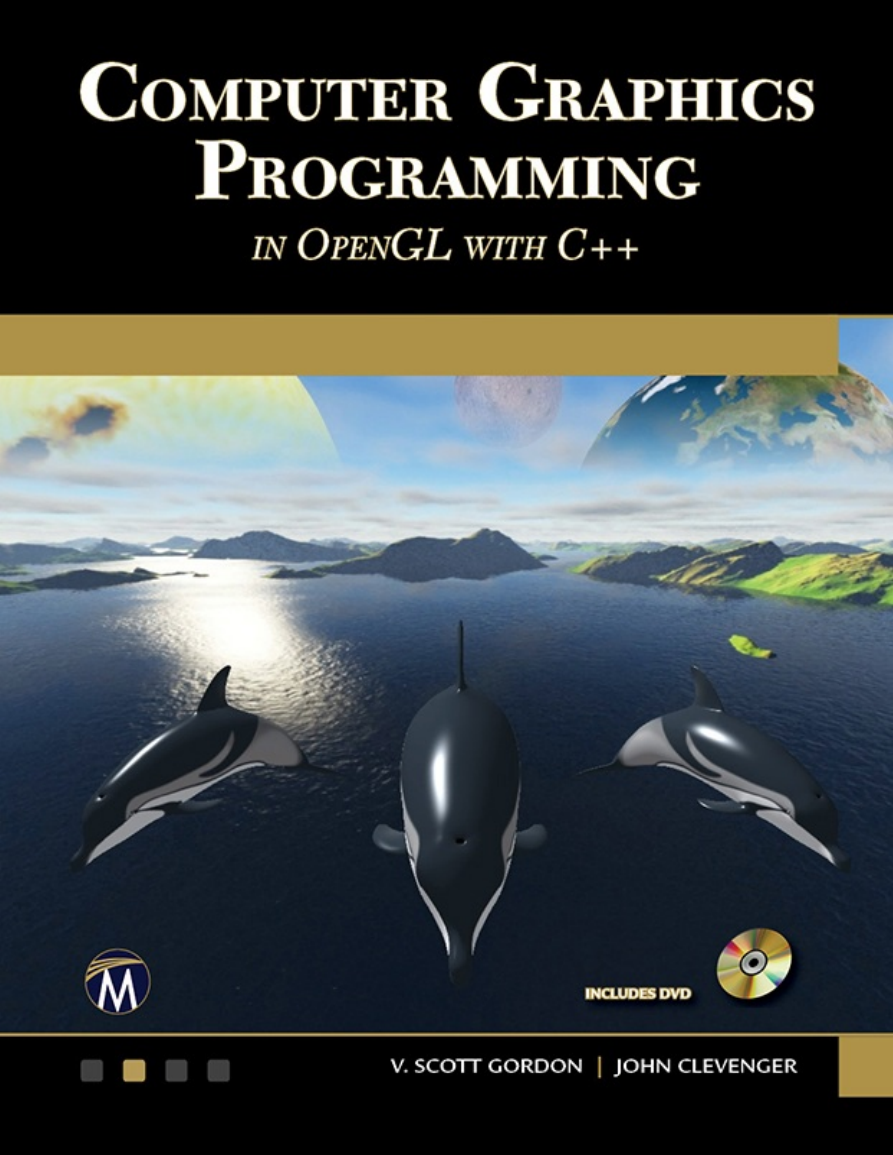
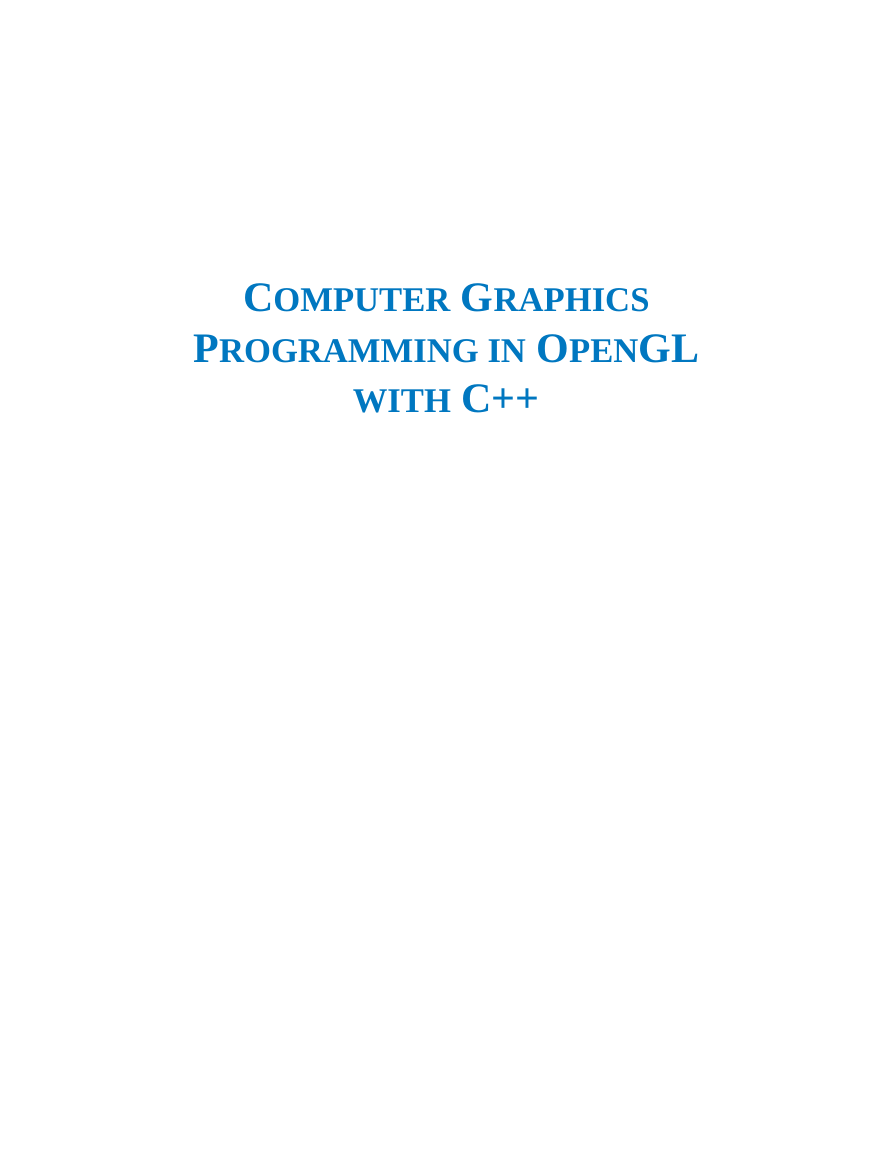
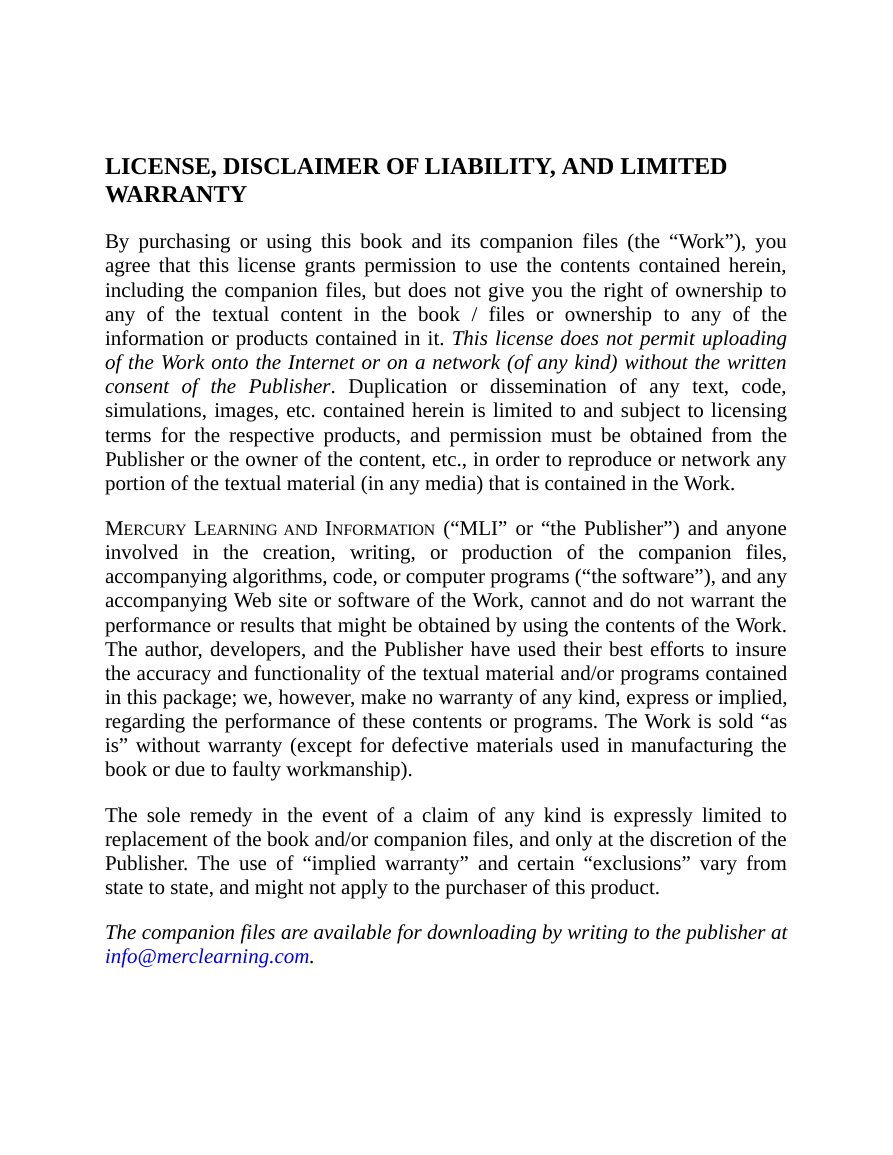
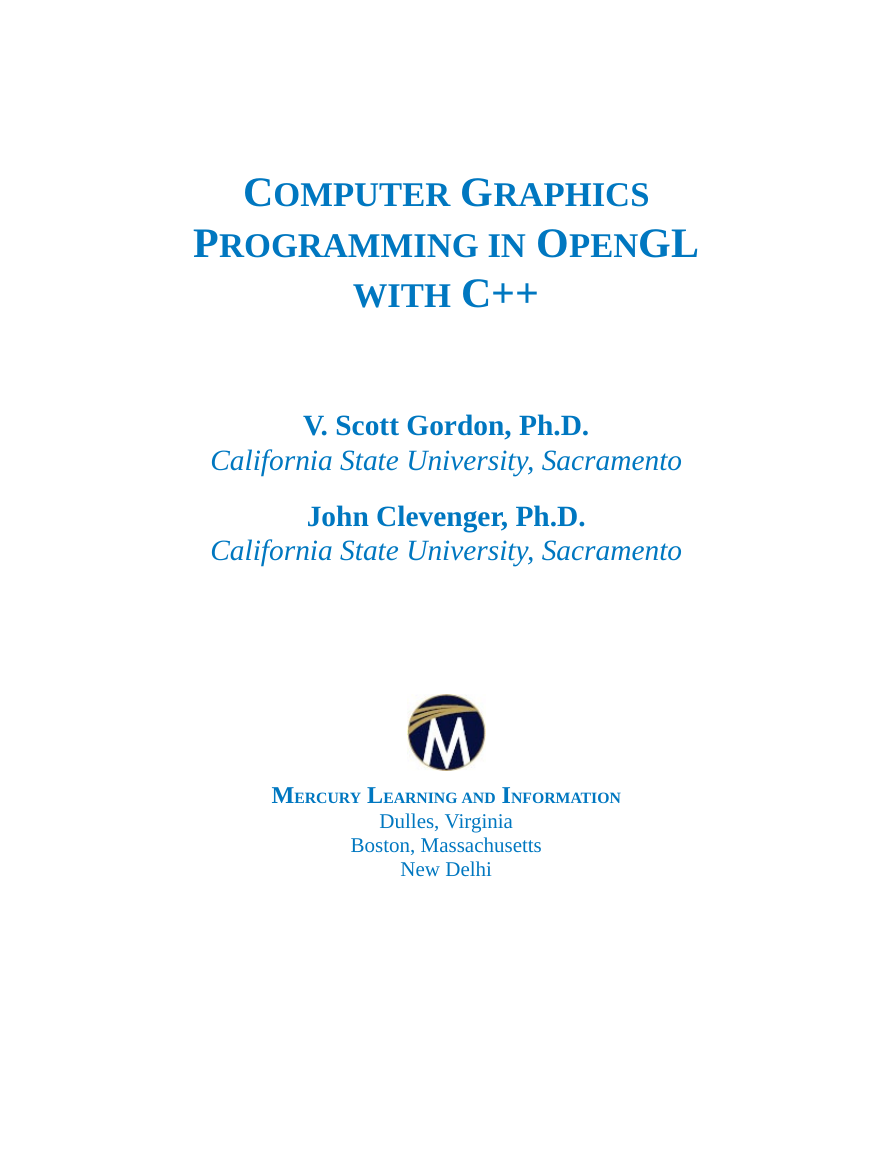
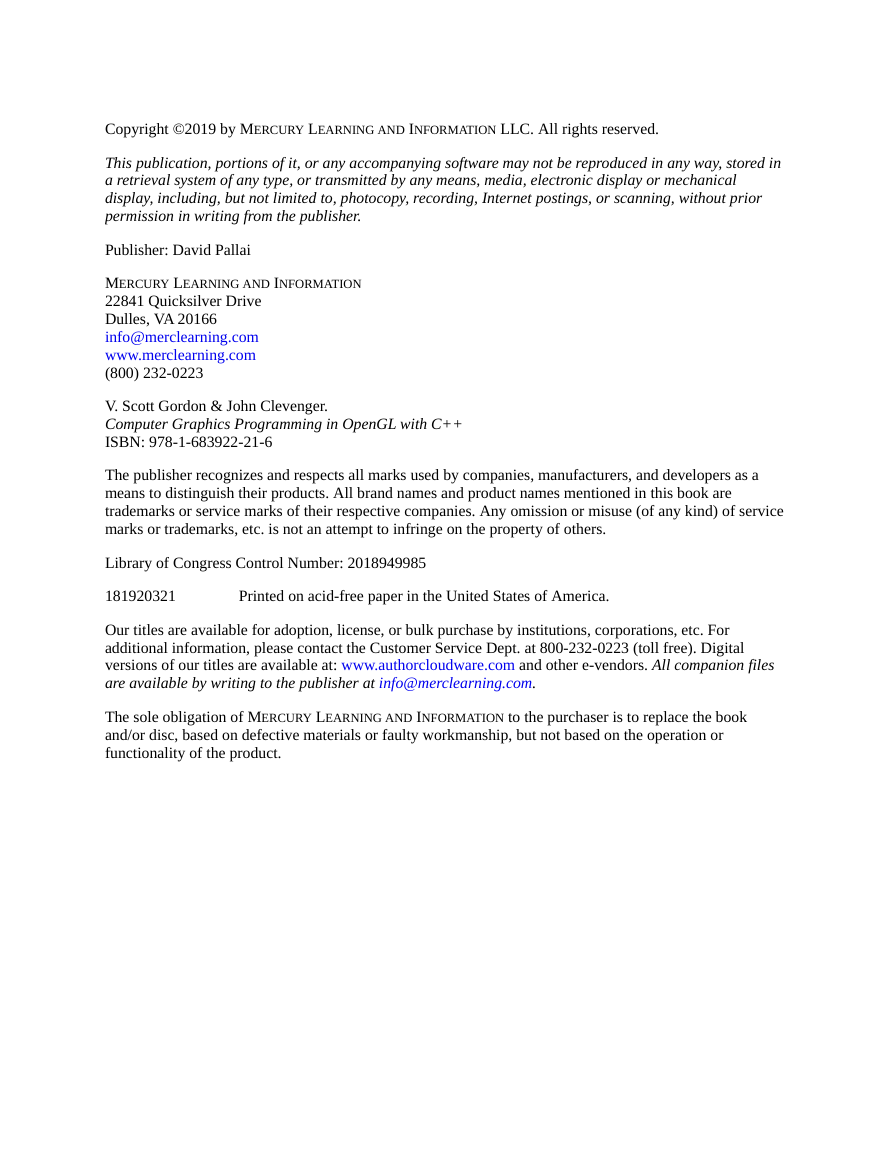

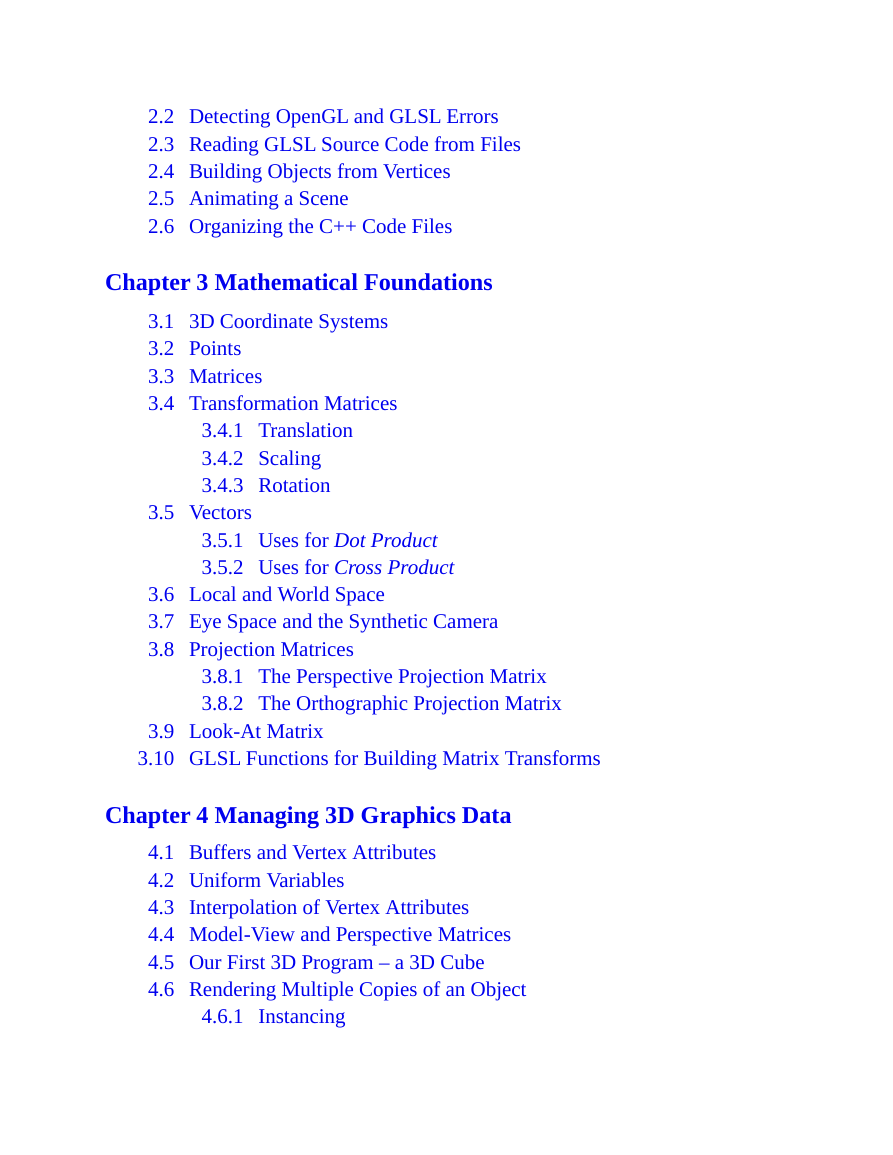









 2023年江西萍乡中考道德与法治真题及答案.doc
2023年江西萍乡中考道德与法治真题及答案.doc 2012年重庆南川中考生物真题及答案.doc
2012年重庆南川中考生物真题及答案.doc 2013年江西师范大学地理学综合及文艺理论基础考研真题.doc
2013年江西师范大学地理学综合及文艺理论基础考研真题.doc 2020年四川甘孜小升初语文真题及答案I卷.doc
2020年四川甘孜小升初语文真题及答案I卷.doc 2020年注册岩土工程师专业基础考试真题及答案.doc
2020年注册岩土工程师专业基础考试真题及答案.doc 2023-2024学年福建省厦门市九年级上学期数学月考试题及答案.doc
2023-2024学年福建省厦门市九年级上学期数学月考试题及答案.doc 2021-2022学年辽宁省沈阳市大东区九年级上学期语文期末试题及答案.doc
2021-2022学年辽宁省沈阳市大东区九年级上学期语文期末试题及答案.doc 2022-2023学年北京东城区初三第一学期物理期末试卷及答案.doc
2022-2023学年北京东城区初三第一学期物理期末试卷及答案.doc 2018上半年江西教师资格初中地理学科知识与教学能力真题及答案.doc
2018上半年江西教师资格初中地理学科知识与教学能力真题及答案.doc 2012年河北国家公务员申论考试真题及答案-省级.doc
2012年河北国家公务员申论考试真题及答案-省级.doc 2020-2021学年江苏省扬州市江都区邵樊片九年级上学期数学第一次质量检测试题及答案.doc
2020-2021学年江苏省扬州市江都区邵樊片九年级上学期数学第一次质量检测试题及答案.doc 2022下半年黑龙江教师资格证中学综合素质真题及答案.doc
2022下半年黑龙江教师资格证中学综合素质真题及答案.doc